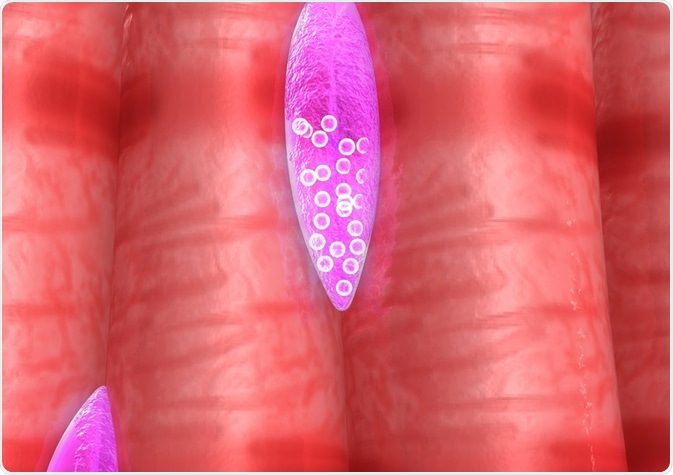Single-molecule biophysics is an area of science enabled by technological developments in biological chemistry.
 Credit: sciencepics/Shutterstock.com
Credit: sciencepics/Shutterstock.com
Many of the most fundamental questions about the nature of life are illuminated at the scale of a single biological molecule. Studies of single-molecule biophysics combine in vivo (in live cells) and in vitro investigations.
What’s different about single-molecule biophysics?
In contrast to bulk biophysical studies, experiments at the single molecule scale require measurements of extremely weak signals in noisy environments.
Single-molecule studies offer the opportunity to capture molecular heterogeneity, rather than an average of millions of molecules. Single molecules usually exist in multiple states, and bulk average analysis can’t probe the multiple states of a heterogeneous molecular system.
Methods for single-molecule biophysics
Most analytical technologies in the field of biochemistry are not sensitive enough to detect single-molecule reactions. Some early techniques for single-molecule experiments include mass spectrometry or the use of the patch clamp technique for studying ion channels developed by Erwin Neher and Bert Sakmann. This method was used to measure current passing across a membrane.
Other pioneering methods used to study single-molecule reactions in a test tube environment include:
- Fluorescence microscopy - used to capture single-molecule Förster resonance energy transfer (smFRET)
- Optical tweezers - used to trap particles using laser radiation pressure
- Atomic force microscopy - use of scanning tunneling microscope to image surface topography to subnanometer precision.
The study of single molecule interactions in a living system presents more of a challenge. In vitro experiments can be controlled to a greater degree and have less contamination and less noise in the signal.
The first definitive single-molecule experiment in a living sample was carried out in 2000. Scientists performed single-molecule imaging on a cell membrane using total internal reflection fluorescence microscopy (TIRF).
Since then, fluorescence imaging has been used for a range of single-molecule studies, including counting molecules in biological processes or tracking mobile components within the cell. Imaging single molecular components has led to advances in understanding of cellular structures.
Non-fluorescence detection techniques are also available. Scanning probe microscopy (SPM) techniques are used for studies requiring topographical detail from a surface. Another non-fluorescent technique is surface enhanced Raman scattering (SERS). This method measures small frequency differences in photons scattered from a surface.
Applications of single-molecule biophysics
Single-molecule biophysics is an evolution of bulk biophysical science. Potential applications include bionanotechnology, systems biology, and single-molecule biomedicine.
Applying physics to biology: single-molecule biophysics
Investigating molecular machinery
In one single-molecule bionanotechnology experiment, a molecule of actomyosin was used to reveal the mechanisms of molecular machines. Actomyosin is the molecular motor of muscle. Hydrolysis of adenosine triphosphate (ATP) provides energy for the movement of actin filaments. A myosin head on the molecule is believed to hydrolyze the ATP.
A scanning probe was used to manipulate a single molecule of myosin. By combining this method with TIRF, researchers were able to develop an assay for measuring individual ATPase and mechanical reactions of a single molecule of myosin.
One of the most powerful applications of single molecule cellular biophysics is single-molecule gene sequencing. Single-molecule, real-time sequencing (SMRT) is a technology developed by Pacific Biosciences that combines two technologies: zero-mode waveguides (ZMWs) and phospholinked nucleotides.
ZMWs illuminate the bottom of a well with a DNA template complexed with DNA polymerase. The phospholinked nucleotides allow observation of the complex as the DNA polymerase synthesizes a new strand in real time. The method has proved powerful in producing accurate sequence with long read lengths at single molecule resolution.
Single-molecule cellular biophysics is a field in its infancy. New applications of technologies in the physical and biological science continue to expand knowledge of cellular processes at the individual molecular level.
Further Reading